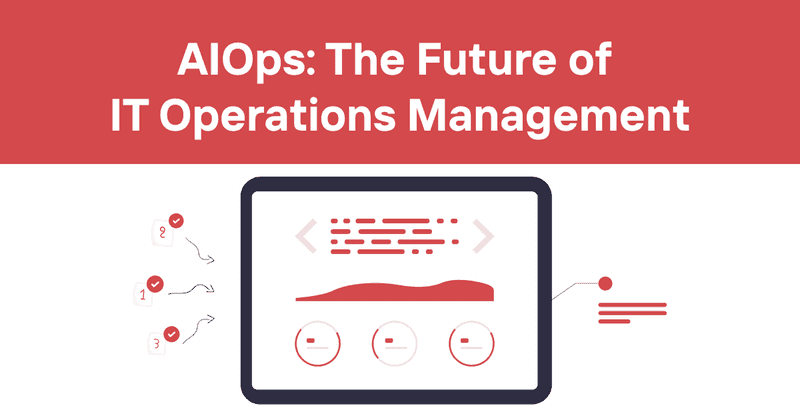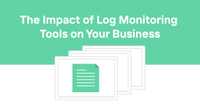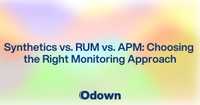AIOps: The Future of IT Operations Management
In today's technology-driven business landscape, IT operations are more complex than ever. With distributed systems, cloud infrastructure, and microservices architectures, maintaining optimal performance has become incredibly challenging. This is where AIOps comes in.
I've spent years working with IT teams struggling to manage increasingly complex systems, and I've seen firsthand how AIOps can transform operations. But what exactly is AIOps, and why should you care? Let's dive in.
Table of contents
- What is AIOps?
- The evolution of IT operations management
- How AIOps works
- Components of AIOps
- Types of AIOps solutions
- AIOps vs. related approaches
- Key use cases for AIOps
- Benefits of implementing AIOps
- Challenges in AIOps implementation
- Getting started with AIOps
- How Odown supports your AIOps strategy
What is AIOps?
AIOps, or Artificial Intelligence for IT Operations, combines big data analytics, machine learning, and automation to enhance IT operations. It's not just another tech buzzword—it's a practical approach to managing the overwhelming complexity of modern IT environments.
The term was coined by Gartner in 2017, but the concept has evolved considerably since then. At its core, AIOps aims to:
- Collect and analyze massive volumes of operational data from diverse sources
- Identify patterns and correlations that human operators might miss
- Automate routine tasks and responses to common issues
- Provide actionable insights for more complex problems
I once worked with a company that was drowning in alerts—literally thousands per day. Their team was exhausted, missing critical issues while chasing false positives. After implementing an AIOps solution, they reduced actionable alerts by 87% and cut their mean time to resolution (MTTR) in half.
The evolution of IT operations management
To appreciate where we are with AIOps, it helps to understand where we've been:
-
Manual operations (pre-2000s) - IT teams relied on manual monitoring and troubleshooting, often reacting to issues after they impacted users.
-
Tool-based monitoring (2000-2010) - Specialized monitoring tools emerged for different infrastructure components, creating siloed visibility.
-
Integrated monitoring (2010-2017) - Teams began consolidating monitoring into centralized platforms, but still struggled with the volume of alerts.
-
AIOps emergence (2017-present) - AI and ML technologies now help filter noise, correlate events, and even predict issues before they occur.
This evolution wasn't smooth or universal. Many organizations still operate somewhere between stages 2 and 3, which explains the growing interest in AIOps solutions.
How AIOps works
AIOps platforms typically follow a three-phase process:
Observe
In the observation phase, AIOps systems ingest data from multiple sources:
- System logs and metrics
- Application performance data
- Network traffic analysis
- Incident tickets and reports
- Configuration management databases
- Infrastructure health metrics
- User experience metrics
This data aggregation breaks down traditional silos between teams and tools. It creates a unified view of the entire IT environment—something that's practically impossible to achieve manually in complex systems.
Analyze
The analysis phase is where AI and ML algorithms do the heavy lifting:
- Pattern recognition - Identifying normal vs. abnormal behavior
- Anomaly detection - Flagging unusual events that might indicate problems
- Event correlation - Connecting related incidents across different systems
- Root cause analysis - Determining the underlying causes of issues
- Predictive analytics - Forecasting potential problems before they occur
The magic happens when these systems learn over time. An AIOps platform becomes more valuable the longer it runs, as it builds a deeper understanding of your specific environment.
Act
Finally, AIOps platforms enable action, either automated or assisted:
- Alert filtering - Reducing noise by suppressing redundant or non-critical alerts
- Incident routing - Directing issues to the right teams
- Automated remediation - Resolving common problems without human intervention
- Guided resolution - Providing step-by-step instructions for complex issues
- Continuous improvement - Learning from each incident to improve future responses
Let me share a real example: A financial services client implemented AIOps and discovered that their monthly processing slowdowns perfectly correlated with their database maintenance schedule. This wasn't visible in their traditional monitoring, but the AIOps platform spotted the pattern immediately.
Components of AIOps
A comprehensive AIOps solution typically includes several key components:
Data collection and aggregation
The foundation of any AIOps system is its ability to collect and aggregate data from diverse sources. This includes:
- Real-time streaming data from applications and infrastructure
- Historical performance data
- Configuration information
- Change records
- Incident histories
Modern environments generate terabytes of operational data daily. Without proper collection and aggregation, this data remains untapped.
Machine learning algorithms
ML algorithms form the brain of AIOps systems. These include:
- Supervised learning - Trained on labeled data to recognize specific patterns
- Unsupervised learning - Discovering hidden patterns without predefined labels
- Reinforcement learning - Improving through trial and error based on feedback
- Deep learning - Using neural networks to identify complex patterns
These algorithms aren't static—they continuously evolve based on new data and feedback.
Analytics capabilities
Analytics translate raw data into actionable insights:
- Descriptive analytics - What happened?
- Diagnostic analytics - Why did it happen?
- Predictive analytics - What might happen next?
- Prescriptive analytics - What should we do about it?
Good AIOps platforms make these insights accessible to different stakeholders, from technical teams to business leaders.
Automation framework
Automation is what truly sets AIOps apart from traditional monitoring:
- Workflow automation - Orchestrating complex sequences of tasks
- Remediation automation - Fixing common issues without human intervention
- Resource scaling - Adjusting capacity based on demand
- Configuration management - Ensuring systems maintain desired states
The best automation frameworks include safeguards and human oversight for critical operations.
Visualization and reporting
Even the most sophisticated AIOps solution needs effective ways to communicate insights:
- Interactive dashboards
- Real-time status views
- Historical trend analysis
- Customizable reports
- Alert notifications
These visualizations should be tailored to different audiences, from technical operators to executive stakeholders.
Types of AIOps solutions
Not all AIOps implementations are created equal. They generally fall into two main categories:
Domain-agnostic AIOps
Domain-agnostic platforms take a broad approach, ingesting data from many different sources to provide a comprehensive view of IT operations. They excel at:
- Cross-domain correlation
- Big-picture analysis
- Enterprise-wide visibility
These solutions are ideal for organizations with complex, heterogeneous environments where issues often span multiple systems or teams.
Domain-centric AIOps
Domain-centric solutions focus on specific technology areas, such as:
- Network operations
- Application performance
- Security operations
- Cloud infrastructure
These specialized tools offer deeper insights within their domains but may miss cross-domain issues.
Many organizations implement a combination of both approaches, using domain-centric tools for specific teams while maintaining a domain-agnostic platform for enterprise-wide visibility.
AIOps vs. related approaches
AIOps is often confused with other operational approaches. Let's clarify the differences:
AIOps vs. DevOps
While both aim to improve IT operations, they differ in scope and focus:
| AIOps | DevOps |
|---|---|
| Focuses on operations monitoring and management | Focuses on development and operations collaboration |
| Uses AI/ML to analyze data and automate responses | Uses automation to accelerate development and deployment |
| Primarily reactive to operational issues | Primarily proactive in building reliable systems |
| Owned by IT operations teams | Shared responsibility across development and operations |
Many organizations successfully combine these approaches, using DevOps principles to build systems and AIOps to monitor and maintain them.
AIOps vs. MLOps
MLOps (Machine Learning Operations) is focused specifically on the lifecycle management of machine learning models. While AIOps uses ML to improve IT operations, MLOps improves how ML models themselves are developed, deployed, and maintained.
AIOps vs. SRE
Site Reliability Engineering (SRE) is Google's approach to service management, focusing on reliability through engineering practices. SRE teams often leverage AIOps tools, but the discipline itself is broader, encompassing cultural, organizational, and technical aspects of reliability.
A useful analogy: If SRE is the philosophy of operational excellence, AIOps provides some of the tools to achieve it.
Key use cases for AIOps
AIOps can transform many aspects of IT operations. Here are some of the most common use cases:
Anomaly detection and alert noise reduction
Traditional monitoring generates overwhelming alert volumes. AIOps systems can:
- Learn normal behavior patterns
- Identify true anomalies
- Suppress redundant or non-actionable alerts
- Correlate related alerts into unified incidents
I've seen organizations reduce their alert volume by 90% or more after implementing AIOps, allowing teams to focus on what really matters.
Root cause analysis
When incidents occur, determining the root cause can be time-consuming. AIOps accelerates this process by:
- Correlating events across systems
- Analyzing timing relationships
- Identifying contributing factors
- Suggesting probable causes
This drastically reduces the "mean time to identify" (MTTI) metric that's critical for rapid incident resolution.
Performance optimization
AIOps platforms can continuously analyze performance data to:
- Identify performance bottlenecks
- Recommend configuration improvements
- Detect capacity issues before they impact users
- Optimize resource allocation
These insights often reveal optimization opportunities that would be impossible to discover manually.
Capacity planning and resource management
Predicting future resource needs is challenging in dynamic environments. AIOps helps by:
- Analyzing usage trends
- Forecasting future demands
- Identifying seasonal patterns
- Recommending optimal resource allocations
This proactive approach prevents both overprovisioning (wasting resources) and underprovisioning (risking performance issues).
Incident prediction and prevention
Perhaps the most valuable capability of mature AIOps systems is their ability to predict potential incidents before they occur:
- Detecting subtle precursors to known issues
- Identifying risky configuration changes
- Alerting to emerging performance trends
- Recommending preventive actions
When successful, this capability shifts operations from reactive firefighting to proactive prevention—the holy grail of IT operations.
Benefits of implementing AIOps
Organizations that successfully implement AIOps typically realize several key benefits:
Reduced mean time to resolution (MTTR)
By automating diagnostic steps and providing rich context for incidents, AIOps platforms can dramatically reduce resolution times. I've seen MTTR improvements of 30-70% in various implementations.
Decreased operational costs
Despite the investment in AIOps technology, organizations often see net cost reductions through:
- Lower incident volumes
- Faster resolutions
- Automated remediation
- More efficient resource utilization
- Reduced downtime costs
One client calculated a 287% ROI on their AIOps investment within the first year, primarily through reduced downtime and operational efficiency gains.
Improved service quality and reliability
AIOps directly impacts the end-user experience by:
- Preventing outages through predictive analytics
- Reducing the duration of unavoidable incidents
- Maintaining consistent performance levels
- Identifying and addressing chronic issues
These improvements translate to higher customer satisfaction and retention.
Enhanced operational efficiency
IT teams become more efficient when they spend less time on routine tasks:
- Fewer hours spent triaging alerts
- Reduced time in war rooms
- Less manual data gathering
- More time for strategic improvements
This efficiency allows organizations to scale operations without proportionally increasing headcount.
Data-driven decision making
AIOps replaces guesswork and intuition with data-driven insights, enabling:
- Objective service level measurement
- Clear visibility into operational trends
- Quantifiable impact analysis
- Evidence-based improvement decisions
These insights help align IT operations with business priorities.
Challenges in AIOps implementation
While the benefits are compelling, implementing AIOps isn't without challenges:
Data quality and integration issues
AIOps systems are only as good as their data. Organizations often struggle with:
- Inconsistent data formats
- Incomplete monitoring coverage
- Data silos between teams or tools
- Historical data limitations
Addressing these issues typically requires significant effort before AIOps can deliver full value.
Skill gaps and organizational resistance
AIOps represents a new way of working, which can face resistance:
- Skills gaps in AI/ML concepts
- Reluctance to trust automated systems
- Fear of job displacement
- Entrenched operational processes
Successful implementations typically include change management and training programs to address these concerns.
Tool complexity and implementation costs
AIOps platforms can be complex to implement and maintain:
- Significant initial configuration
- Ongoing tuning and optimization
- Integration with existing tools
- Training and education requirements
Organizations should prepare for substantial investment beyond the license costs.
Algorithmic transparency and trust
AI-based decisions can sometimes seem like black boxes:
- Difficult to explain certain recommendations
- Challenging to verify algorithmic logic
- Risk of reinforcing existing biases
- Trust issues with automated remediation
Leading AIOps platforms are addressing these concerns with explainable AI features and transparent decision trails.
Getting started with AIOps
If you're considering AIOps for your organization, here are some practical steps to get started:
Assess your current operational maturity
Before diving into AIOps, evaluate your existing operations:
- Do you have comprehensive monitoring in place?
- Are your operational processes well-defined?
- Do you collect and store historical performance data?
- Have you identified your most critical pain points?
AIOps builds upon existing operational capabilities rather than replacing them.
Define clear objectives and use cases
Start with specific, measurable goals:
- Reducing alert volume by X%
- Decreasing MTTR for critical incidents
- Improving availability of key services
- Automating specific routine tasks
Focused initial use cases are more likely to succeed than broad, ambitious implementations.
Start small and iterate
Rather than a big-bang approach, consider:
- Piloting with a single application or service
- Focusing on data collection before advanced analytics
- Implementing basic correlation before automation
- Measuring results and adjusting your approach
This incremental approach reduces risk and builds confidence.
Invest in skills and culture
Technology alone isn't enough—prepare your team by:
- Providing AI/ML fundamentals training
- Building data literacy across IT teams
- Encouraging experimentation and learning
- Celebrating early wins and sharing success stories
The most successful AIOps implementations are as much about people as technology.
How Odown supports your AIOps strategy
While Odown doesn't position itself as a complete AIOps platform, it provides several essential capabilities that complement and enhance your AIOps strategy:
Comprehensive uptime monitoring
Odown's website and API monitoring provides critical observability data that feeds into your AIOps ecosystem:
- Real-time availability metrics
- Performance trend data
- Global monitoring from multiple locations
- Detailed incident timelines
This observability layer forms the foundation for effective AIOps, ensuring you have quality data to analyze.
SSL certificate monitoring
Expired SSL certificates are a common cause of outages and security issues. Odown's SSL monitoring capabilities help prevent these problems:
- Certificate expiration alerts
- Validation of certificate configurations
- Early warning of potential issues
- Historical certificate data
This proactive monitoring aligns perfectly with the predictive nature of AIOps.
Public status pages
Transparent communication during incidents is crucial. Odown's status page functionality:
- Automatically reflects monitoring status
- Provides a unified view of service health
- Communicates incidents to users
- Maintains incident history
These capabilities complement your AIOps incident management processes, ensuring consistent communication while your teams focus on resolution.
By integrating Odown's monitoring capabilities with your broader AIOps strategy, you can build a more comprehensive and effective operational framework. The real-time data from Odown provides the observability foundation upon which more advanced AIOps capabilities can be built.
I've seen organizations start with basic monitoring like Odown provides, then gradually expand into more sophisticated AIOps capabilities as they mature. It's a practical, step-by-step approach that delivers value at each stage of the journey.
Whether you're just beginning your AIOps journey or looking to enhance an existing implementation, Odown's monitoring solutions provide critical visibility that can help you achieve your operational goals. After all, you can't improve what you can't measure, and Odown ensures you're measuring what matters most: the availability and performance of your digital services.



